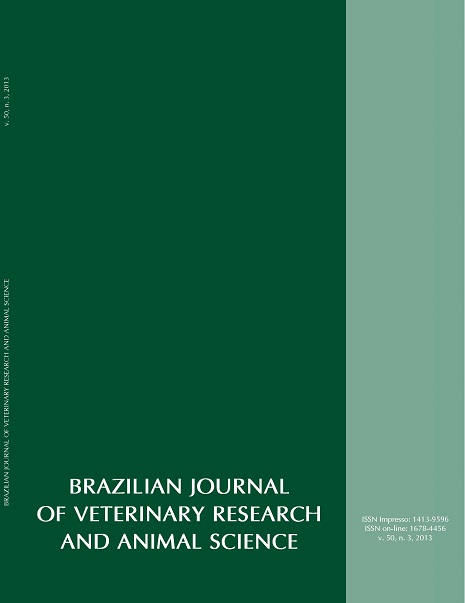Seroepidemiology of canine leptospirosis in the metropolitan area of Natal, Rio Grande do Norte State
DOI:
https://doi.org/10.11606/issn.1678-4456.v50i3p226-232Keywords:
Leptospira spp, Serology, Risk factors, Dogs, Northeastern BrazilAbstract
The aim of this study was to determine the frequency of dogs seropositive to anti-Leptospira spp. antibodies in Natal and metropolitan area, Rio Grande do Norte state, and to identify risk factors associated with the infection. A total of 365 blood samples were collected from dogs attended at the routine of several veterinary clinics during March to November 2011. Serological diagnosis of leptospirosis was carried out using the microscopic agglutination test (MAT) with 24 Leptospira spp. serovars as antigens. Of the 365 dogs 25 were seropositive for at least one of the Leptospira spp. serovars with frequency of 6.8%. Serovars with most frequent serological reactions were Shermani (40%), Sentot (36%) and Copenhageni (20%). The epidemiological profile of canine leptospirosis in the metropolitan region of Natal, Rio Grande do Norte state, indicates that the infection occurs in a low frequency compared with other regions, probably due to high percentage of vaccinated animals, as well as it is suggested homogenous distribution of seropositive animals in the region. Moreover, presence of rodents can be a significant risk factor since serovars maintained by these animals were identified among the most frequent.Downloads
Download data is not yet available.
Downloads
Published
2013-06-21
Issue
Section
UNDEFINIED
License
The journal content is authorized under the Creative Commons BY-NC-SA license (summary of the license: https://
How to Cite
1.
Fernandes AR da F, Fernandes AG, Araújo VJA, Higino SS dos S, Silva MLCR, Alves CJ, et al. Seroepidemiology of canine leptospirosis in the metropolitan area of Natal, Rio Grande do Norte State. Braz. J. Vet. Res. Anim. Sci. [Internet]. 2013 Jun. 21 [cited 2024 Apr. 23];50(3):226-32. Available from: https://www.revistas.usp.br/bjvras/article/view/53980





